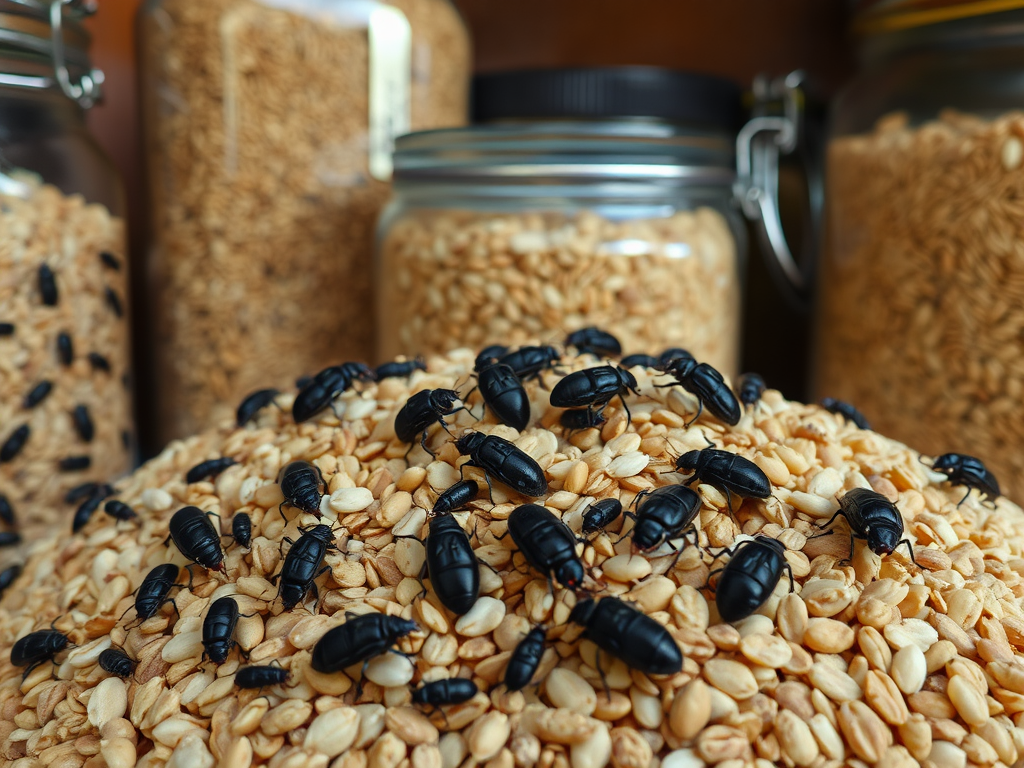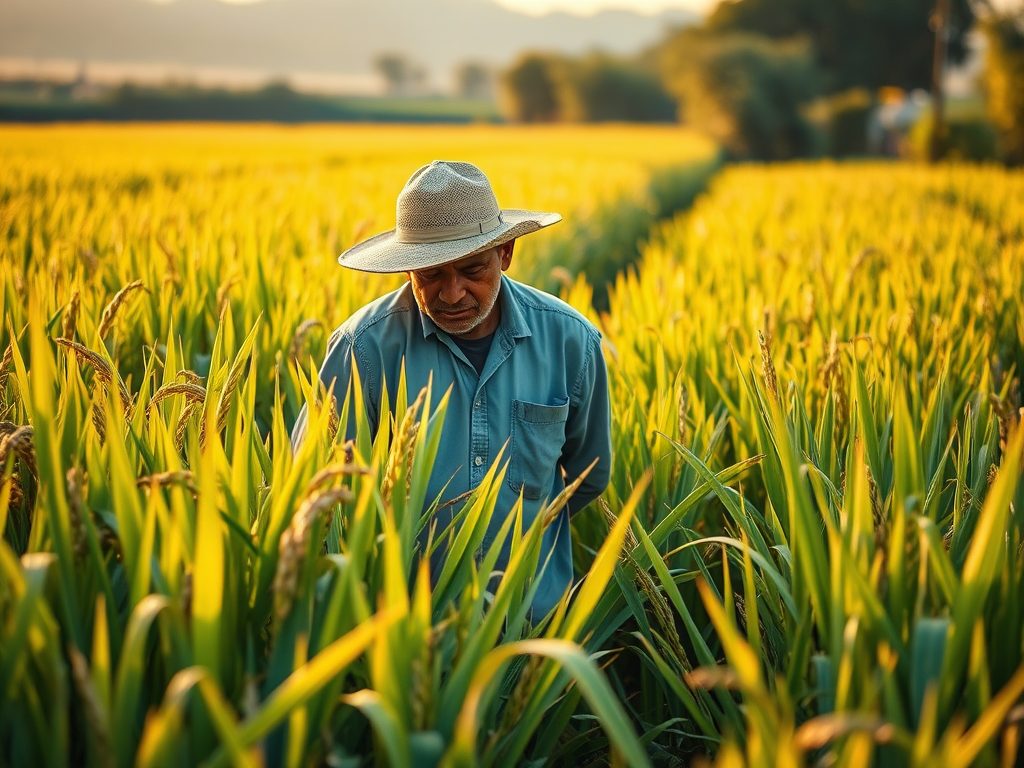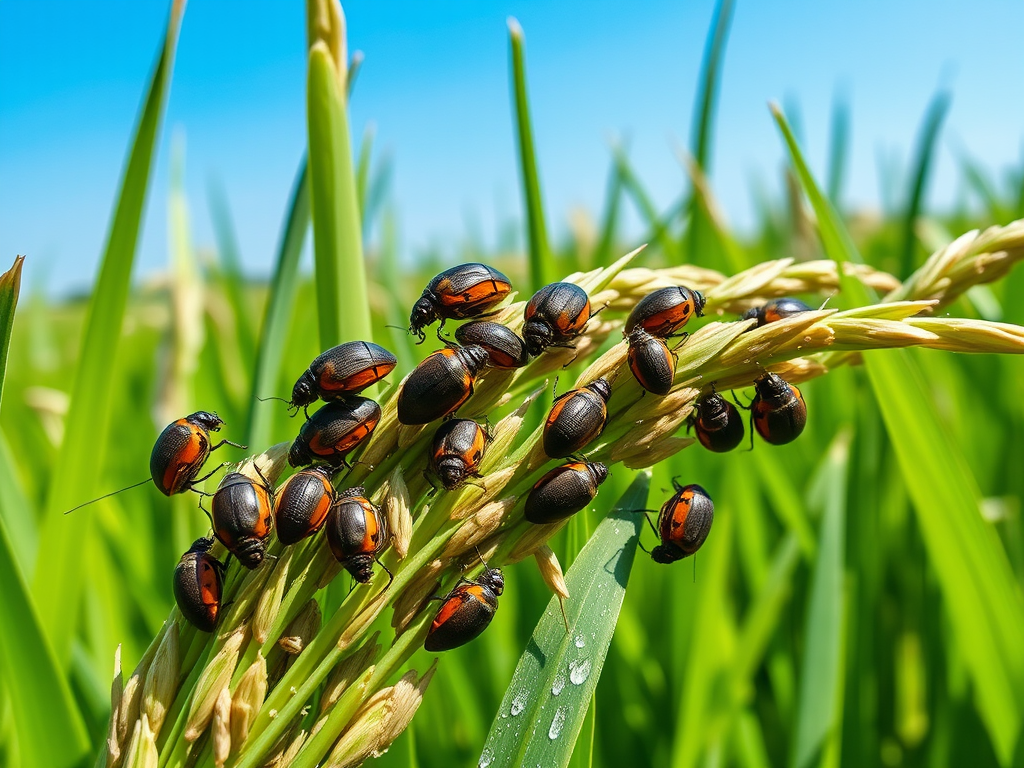Identifying pests can be a daunting task, especially when two similar-looking insects threaten your crops or stored grains. Among the most common culprits of grain destruction are rice bugs and weevils, both notorious for their negative impact on agricultural yield and food supplies. Understanding these pests goes beyond merely recognizing their appearances; it encompasses being aware of their behaviors, habitats, and control measures. This knowledge not only empowers farmers but also helps homeowners protect their kitchens and pantries. Through this guide, we will dive deep into the characteristics and distinctions of these pests, equipping you with the necessary tools to combat them effectively. Whether you’re a seasoned agronomist or a kitchen enthusiast, you’ll find useful insights on how to distinguish between rice bugs and weevils.
What are Rice Bugs?

Rice bugs, scientifically known as Lissorhoptrus oryzophilus, are formidable pests primarily found in rice fields. Their destructive nature poses a substantial threat during the growing season as these insects feed on the grains, leading to significant crop loss. When the infestation is severe, it can decimate the entire crop, making identification and timely intervention crucial. These pests thrive in warm and humid conditions, which are typically found in rice cultivation areas. In addition to their agricultural significance, rice bugs can also disrupt the delicate ecosystem within rice paddies. Understanding their biology and behavior is vital for anyone involved in rice production.
Recognizing rice bugs requires a keen eye for detail. They are generally brown or black, displaying an elongated body shape. Typically, their size ranges from 1/4 to 1/2 inch in length, making them somewhat conspicuous against the backdrop of green rice plants. Their long antennae are another defining feature that differentiates them from other pests. Additionally, when rice bug populations surge, the visible damage on the rice plants can include yellowing leaves and shriveled grains, which further aids in their identification. These characteristics make it essential for farmers to be vigilant during the growing season.
What are Weevils?

Weevils, particularly the rice weevil (Sitophilus oryzae), are another category of pests that wreak havoc on stored grains. Unlike rice bugs, weevils are primarily found in pantry and storage settings, where they can lead to spoilage and waste. Their ability to reproduce quickly in favorable conditions exacerbates the problem, often leading to unexpected infestations. These pests are particularly notorious for their long snouts, which set them apart from other grain insects. With their smaller stature and dark coloration, recognizing weevils can be essential for preserving food supplies. The unique life cycle of weevils contributes to their resilience as pests, making effective management strategies crucial.
Weevils can be distinguished from other pests through their distinctive physical features. Typically measuring 1/8 to 1/4 inch in length, they are much smaller than rice bugs. Their dark bodies, usually brown or black, often have pin-like spots which can serve as a visual cue for identification. Their elongated snouts, giving them a unique appearance, are also essential in their classification. These features, alongside their preference for stored grains, make weevils a significant concern for food storage facilities and households alike. Understanding their characteristics aids in the quick and effective identification of infestations.
Key Differences Between Rice Bugs and Weevils
Recognizing the distinctions between rice bugs and weevils is vital for effective pest management. This knowledge can significantly impact prevention strategies and intervention efforts. Below is a brief overview that summarizes their key differences:
| Aspect | Rice Bugs | Weevils |
|---|---|---|
| Habitat | Fields (live crops) | Storage areas (stored grains) |
| Appearance | Elongated, brown or black, 1/4 – 1/2 inch | Smaller, dark with pin-like spots, 1/8 – 1/4 inch |
| Primary Damage | Destroyed crops | Infested stored grain |
This table encapsulates the key differences, enabling a quick reference for those looking to identify and manage these pests. Additionally, understanding their feeding habits offers valuable insights into the nature of these pests. Below are their primary feeding behaviors:
- Rice Bugs: Feed on live crops, particularly young rice plants.
- Weevils: Infest and feed on stored grains in bins and pantries.
Management and Control Strategies
Effective management strategies can make a significant difference in controlling rice bugs and weevils. Awareness of preventive measures and treatment options is essential for minimizing damage caused by these pests. Here are some crucial steps that can be taken:
- Conduct regular inspections of crops and stored grains to detect infestations early.
- Maintain cleanliness in storage areas to prevent weevil populations from growing.
- Implement pesticide treatments as necessary for both rice fields and storage facilities.
For both rice bugs and weevils, timely intervention can mitigate severe infestations. Options may vary based on the specific pest and environment, but some treatments include:
- Chemical Pesticides: Use approved pesticides targeted at specific pests.
- Natural Remedies: Consider organic solutions like diatomaceous earth for grain protection.
- Humidity Control: Maintaining a lower humidity can deter weevil infestations.
Conclusion
Understanding the distinctions between rice bugs and weevils is crucial for effective pest management. Equipped with the knowledge of their characteristics, habitats, and control strategies, individuals and businesses can better protect crops and food supplies from damage. The process may involve careful observation and swift action to prevent further infestations. With a combination of preventative measures and treatment options, it’s possible to maintain healthy crops and safe storage conditions. Overall, distinguishing between rice bugs and weevils not only safeguards your resources but also ensures a sustainable approach to pest management.
Frequently Asked Questions
- What do rice bugs look like? Rice bugs are elongated, typically brown or black, measuring between 1/4 and 1/2 inch in length.
- How can I identify a weevil? Weevils have a long snout, are smaller (1/8 to 1/4 inch), and often feature pin-like spots on their bodies.
- Do rice bugs harm stored grains? Rice bugs primarily attack live rice crops, so they typically do not infest stored grains.
- What is the best way to prevent infestations? Regular inspections, maintaining cleanliness in storage spaces, and practicing proper grain storage techniques can effectively prevent infestations.
- Are there any natural remedies for controlling rice bugs and weevils? Yes, natural remedies include using diatomaceous earth, essential oils, and maintaining proper humidity levels in storage areas.



